My name is Natasha Verma. I have a unique upbringing having graduated from high school at the age of 15. By 17, I became the University of Texas’ youngest-ever graduate, earning two undergraduate degrees – in broadcast journalism and biology/pre-med. At 18, I earned a master’s degree in journalism from Columbia University.
After working my way up the ladder in the television industry, I became an anchor and reporter for NBC10 Boston in 2016.
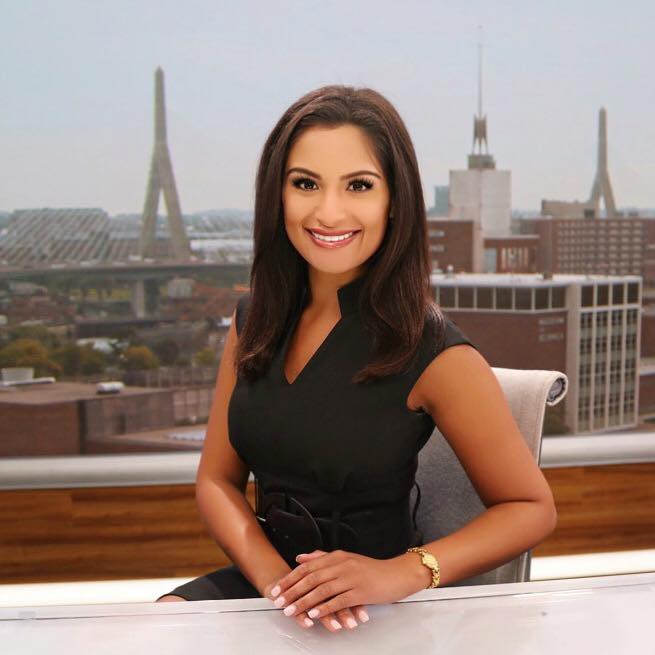
I had no thoughts of slowing down until one morning in August, I felt a sharp pain down the left side of my shoulder. I felt around that area and found a lump. I didn’t think anything of it at first other than perhaps I had pulled a muscle at the gym and a cyst formed. My father is a physician so I consulted him about the pain I was experiencing. Both of his parents passed away from cancer. My grandmother was diagnosed with stage 4 pancreatic cancer and given 30 days to live. She passed away from the surgery to remove the tumor. My grandfather suffered from oral cancer complications. So when my father heard about the lump on my collarbone, he was understandably concerned. The pain sent me to the emergency room where I clearly remember the ER doctor examining the area and saying, “Oh the lump moves that’s a really good sign! She sent me on my way with pain medications. The pain improved, but the lump didn’t go away. I was still concerned.
A few days later, I started to experience chest pain. I’d take a deep breath and feel push back. It’s as if I couldn’t completely fill up my lungs with air. This time, I went to a different doctor at Beth Israel Boston, and even that doctor tried to turn me away. He said, “Sweetie, you’re going to find bumps and bruises all over your body. You don’t need to come in for every single one of them.” He refused to do an ultrasound or CT scan, which is what my father recommended he do as none of my questions were being answered. I remember asking the doctor point blank – is it cancer? He said, “No way! You’re 23 with no pre-existing medical conditions.” He was actually telling me to go back home to Austin, TX, which is where I’m from, to get an ultrasound at my father’s clinic in a month. After begging him for an ultrasound, he did it.
It took hours to get the results back and when the doctor returned to the examination room, the color had drained from his face. With a change in demeanor, he said, “We found an enlarged lymph node need to do a CT scan.” That’s when I started to panic. They did a CT scan. A few hours later, he came back to the room, sat down and said given your age,
“We believe you have Hodgkin’s lymphoma.”
It’s a cancer of the lymphatic system which is apart of the immune system. It’s basically a cancer of the healthy with no known cause and affects people in their 20s and 50s. Beth Israel immediately scheduled a biopsy and a PET scan.
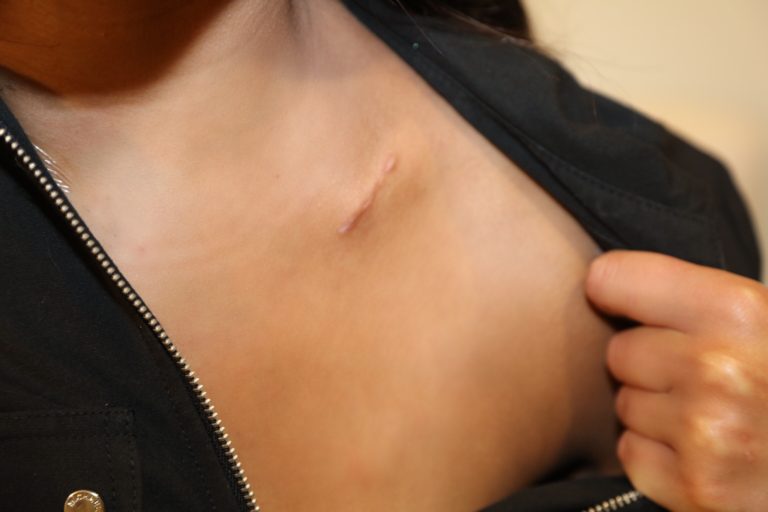
I was diagnosed with stage 2 Hodgkin’s lymphoma.
Not only was there a tumor on the left side of my collarbone, but I had a tumor on the right side and a mass growing in my chest. And it was growing fast. I remember sitting on the bed in the examination room, staring at my scans and thinking how could that be MY body! The scans lit up like Christmas trees showcasing all the cancerous activity in my body.
With a race against time, I started chemotherapy at Beth Israel Boston. The initial plan was 2 rounds with radiation, but they decided to do 3 rounds without radiation which was a huge win because I would have been radiated in my chest, which means a risk of breast cancer down the road and fertility complications.
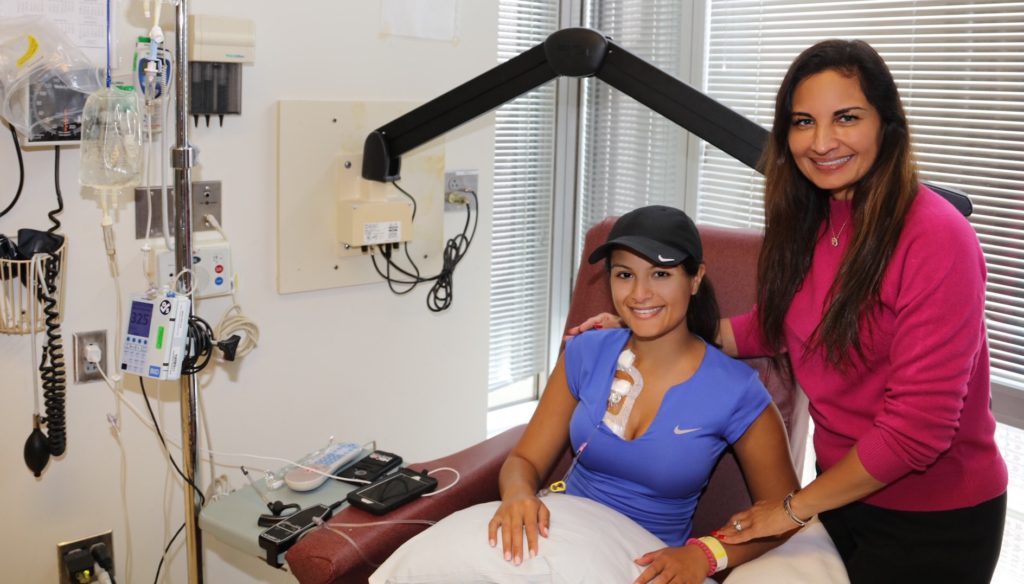
I am so happy I advocated for my health. If I had waited a month to get an ultrasound like the second doctor had told me to do, who knows where the cancer would have spread. It’s so important to listen to your body. If you feel something is wrong or notice unusual pain like I did, go and get it checked out. Get you questions answered.
After hearing about my diagnosis, I was shocked, heartbroken, and honestly, angry. Why me?
I had a very difficult time with chemotherapy. I was on 15 different pills a day – on pain medication around the clock. Each muscle in my body from my jaw, throat, shoulder, back, arms, stomach to my kneecaps writhed in pain from cramps and spasms. I laid in bed motionless as if a Mac truck had repeatedly run me over. I felt betrayed by my body. During treatment, I watched my body deteriorate before my eyes – weight loss and weakness. I was angry and frustrated with my inefficiency to do small things I took for granted like leave the house and go for a walk. My lung capacity had dropped significantly while my skin and nails turned black from the chemo drugs.
Thank God for my family, who was my greatest support system. I could not have done anything – physically or mentally – without them. I put every ounce of faith in the brilliant doctors at Beth Israel. Thank you to Dr. Robin Joyce, Dr. Kartik Sehgal, nurse Jade Hering and my oncology team for saving my life.
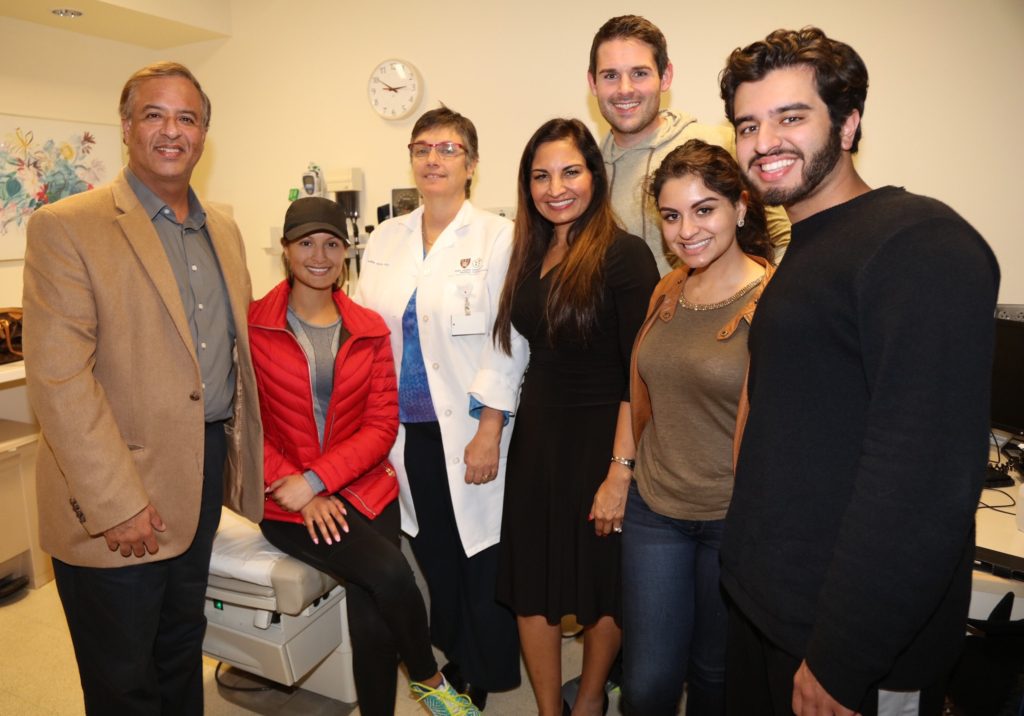
Then came the hair loss.
It may sound trivial and superficial, but most women will tell you that hair is a big part of our identity. While I knew hair loss was imminent, nothing prepared me for the emotional toll it would take.
One day after my second round of chemotherapy, I remember taking a shower at night, and as I massaged the shampoo into my hair, strands of hair wrapped around my fingers and went down the drain. To my horror, I would gently tug a long piece of hair and it would painlessly fall out.
One piece, two, three and then whole chunks were coming out as I brushed my hair. Every pillow I laid on and chair I sat on would be covered with dead hair. The next night I decided to just close my eyes and comb out the dead hair. It was horrifying to watch fistfuls tossed into the trash. After a week, most of my hair was gone, and I had lost my eyebrows and eyelashes too.
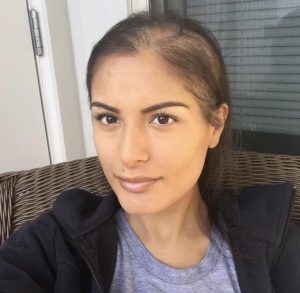
I could no longer recognize the bald figure staring back in the mirror. Most women facing cancer would tell you the sight is depressing.
I bought a synthetic wig. I hated it. It didn’t look like me. The hairline looked fake and the actual wig was too big for my head. I couldn’t style the hair because it was synthetic and worst of all – it was so itchy. The wig stressed me out so much that I would throw a baseball cap on top, and that solved the problem of the hairline but not the itchiness. I always wished I had a cap wig – hair attached to the brim of the baseball cap so I got to thinking. I moved around some resources and I designed just that. Cap wigs. 100% human hair attached to cotton or velvet cap wigs.
Through my 501(c)(3) non-profit organization I give FREE cap wigs to women and children fighting cancer. I believe every woman and child going through cancer treatment deserves access to a quality wig in which she can feel beautiful and confident in. Wigs can cost $1000 so that’s why we give them for free. On top of amounting hospital bills, the cost of a wig is the last thing a cancer patient is paying for. The gift of a cap wig can give patients hope, confidence and strength.
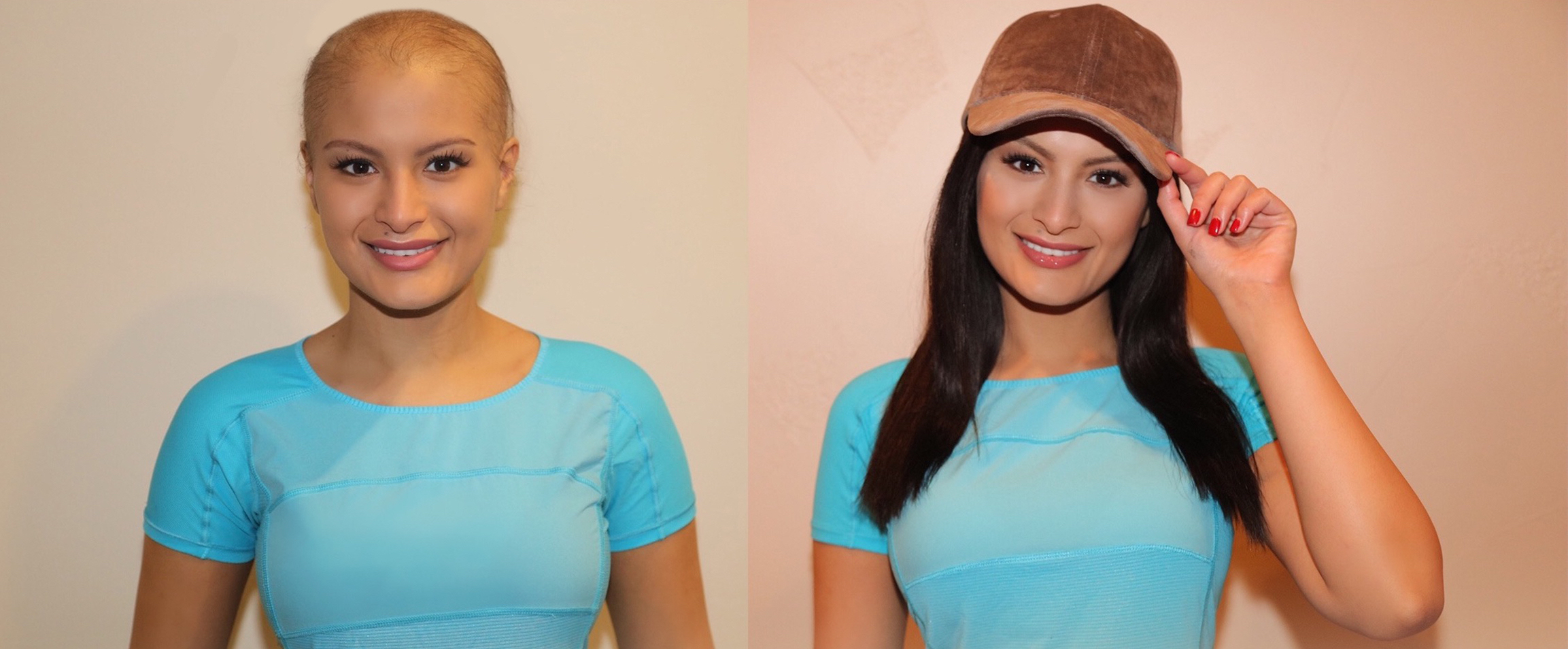
Today, I am in remission.
I returned to work at NBC10 Boston in January 2018. Initially I wore a wig on TV, but a couple of months later when I was comfortable, I decided to ditch the wig and reveal the hair growth underneath. I overcame my vulnerability and was very proud to debut my newfound strength. My new hair is a symbol of struggle, rebirth and growth. I’m moving forward and have found my purpose in giving hope and inspiration to others battling cancer through the Verma Foundation.
Thank you all for your support and help to #PutACapOnCancer.
Sincerely,
Natasha Verma
